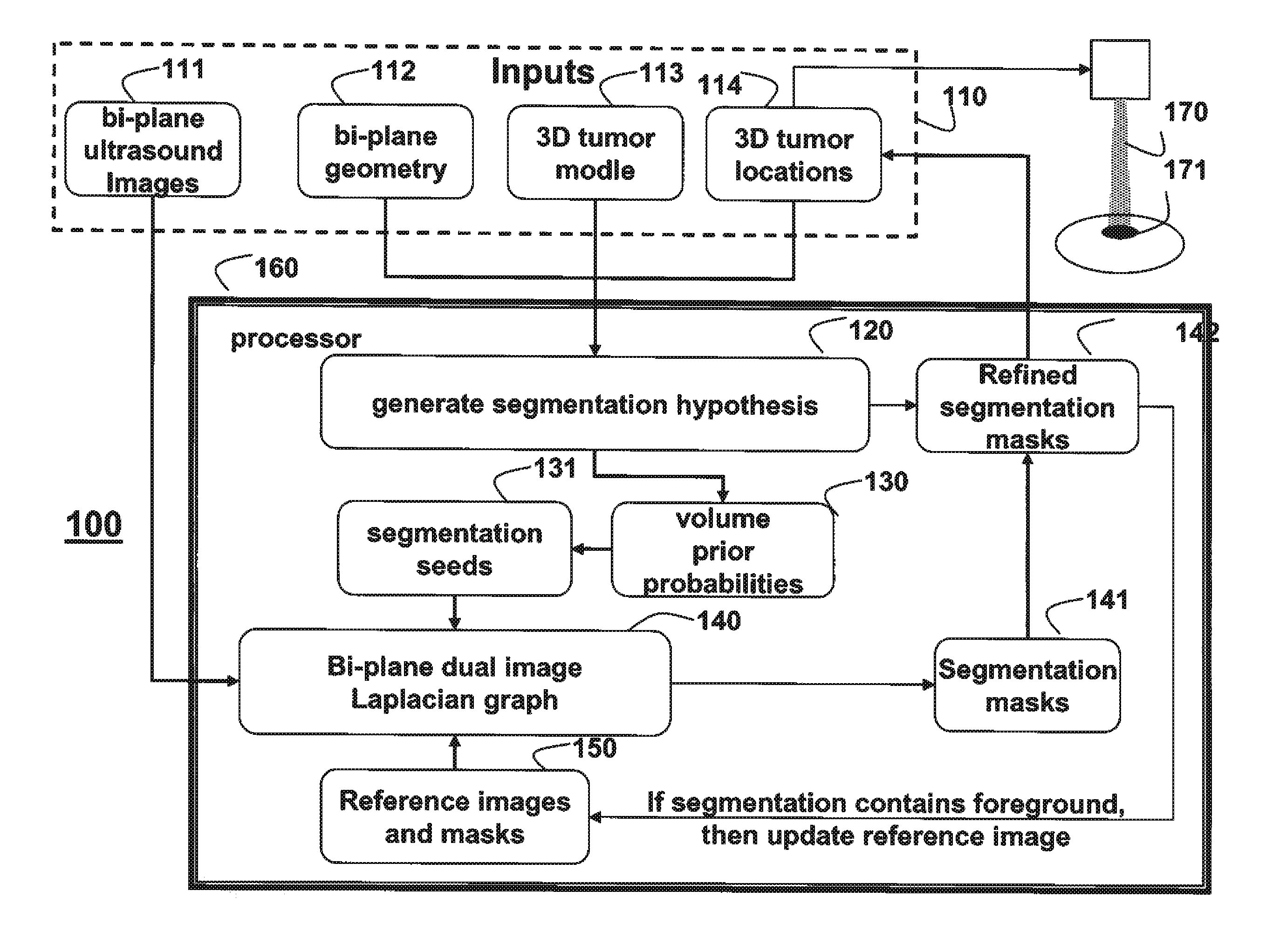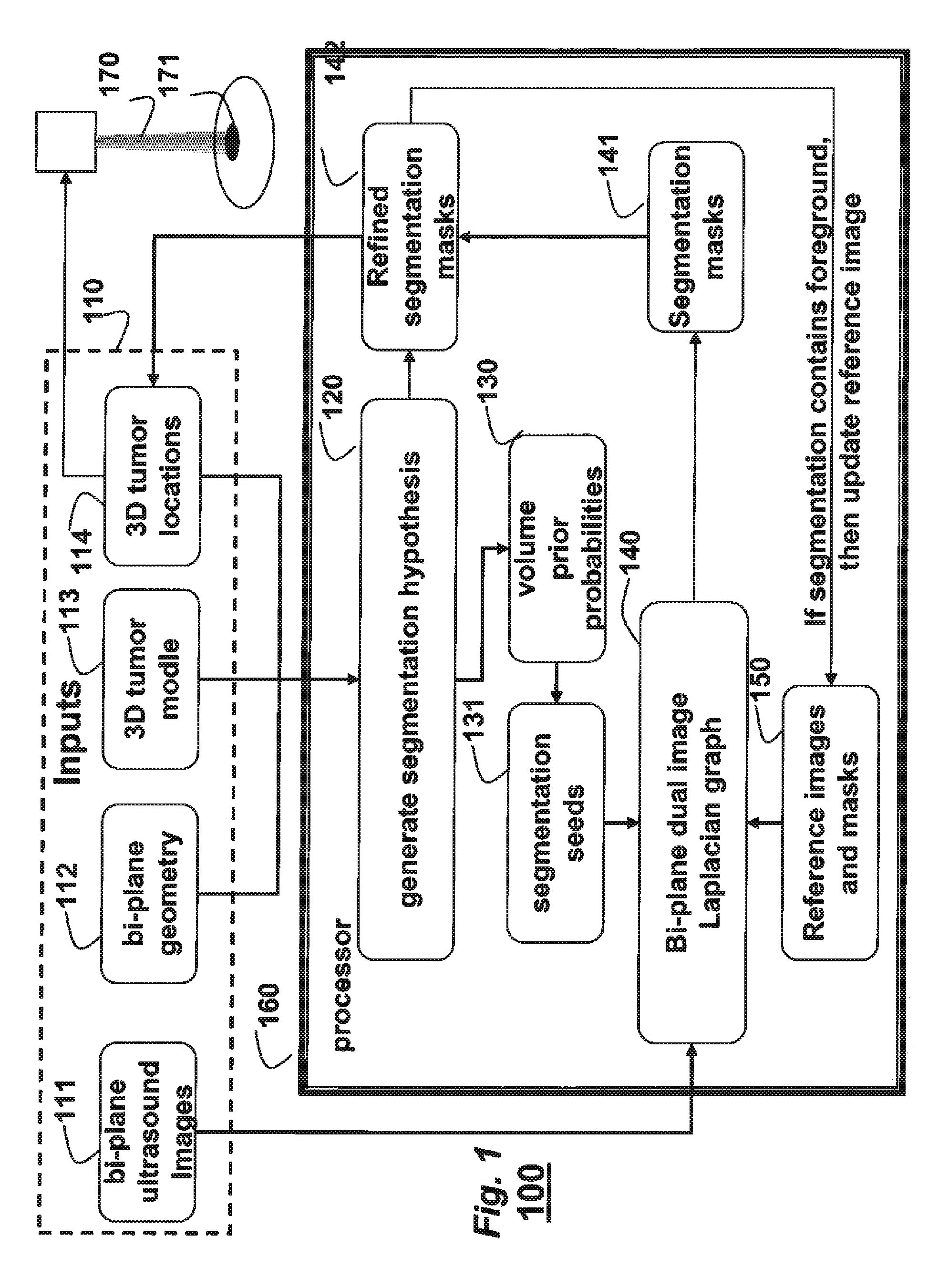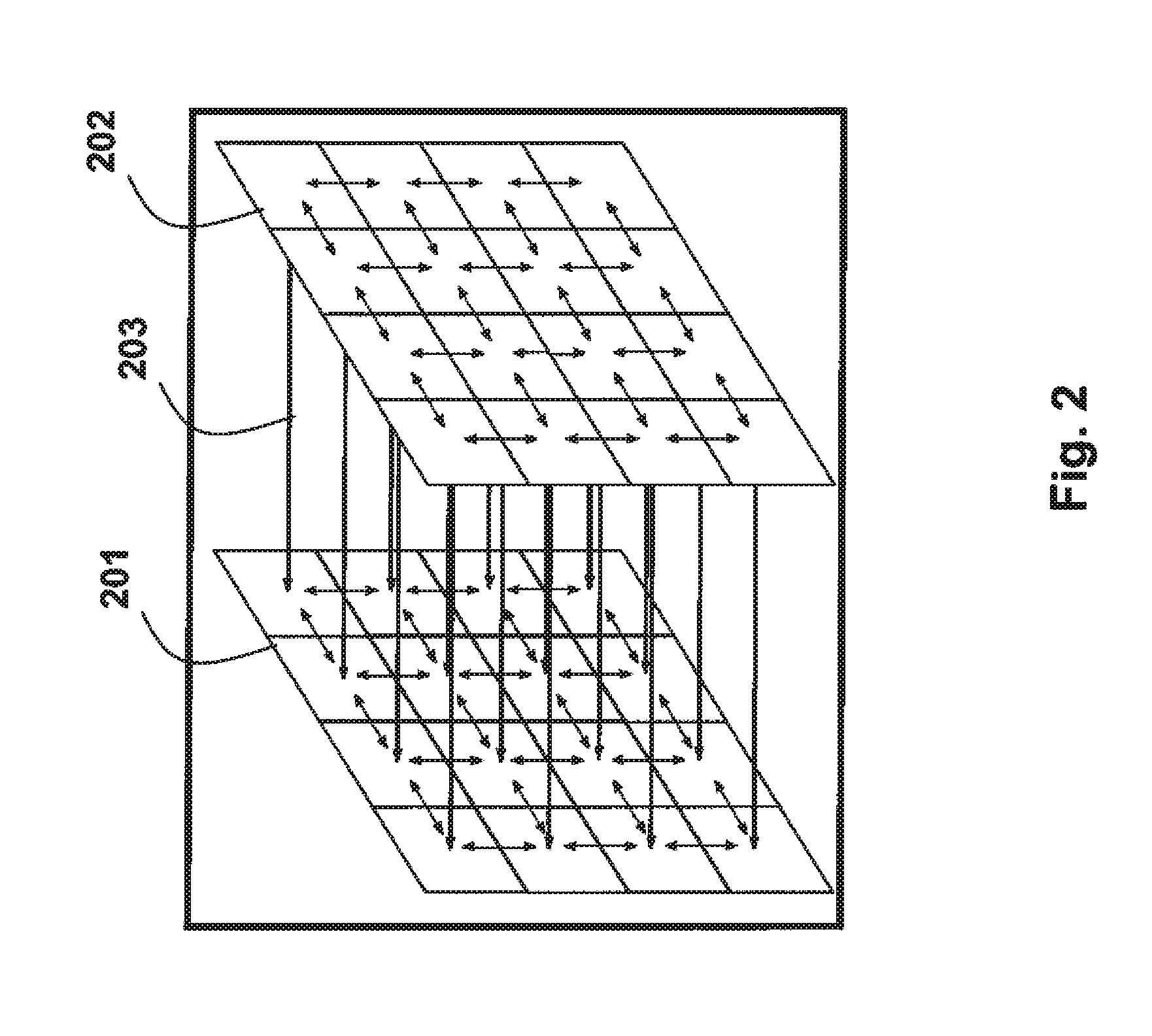Method for Tracking Tumors in Bi-Plane Images
a tumor and image sequence technology, applied in the field of 3d objects tracking, can solve the problems of time-consuming, difficult to extend the above described methods to tracking tumors in sequences of images, and high method complexity
- Summary
- Abstract
- Description
- Claims
- Application Information
AI Technical Summary
Benefits of technology
Problems solved by technology
Method used
Image
Examples
Embodiment Construction
[0025]FIG. 1 shows a method 100 for tracking a 3D tumor in sequences of bi-plane images using a 3D model of the shape of the tumor as prior information according to embodiments of our invention.
[0026]Inputs 110 to the method include two sequences of pairs of bi-plane images 111, a bi-plane geometry 112, a 3D model 113 of the tumor, and an initial 3D tumor location 114. The initial location can be estimated or approximate. Iterations of the method update the location 114 as the tumor is tracked. In one embodiment, the bi-plane images are acquired by two ultrasound transducer arrays that are rotated with respect of each other to provide simultaneous views in two image planes. Hence, at each time instant, there is a pair of two images. It is understood that the invention can also be worked with other imaging modalities.
[0027]For each pair of current image in the sequence 111, a set of hypotheses are generated 120 using the 3D tumor model 113 given the bi-plane geometry 112, and the loc...
PUM
 Login to View More
Login to View More Abstract
Description
Claims
Application Information
 Login to View More
Login to View More - R&D
- Intellectual Property
- Life Sciences
- Materials
- Tech Scout
- Unparalleled Data Quality
- Higher Quality Content
- 60% Fewer Hallucinations
Browse by: Latest US Patents, China's latest patents, Technical Efficacy Thesaurus, Application Domain, Technology Topic, Popular Technical Reports.
© 2025 PatSnap. All rights reserved.Legal|Privacy policy|Modern Slavery Act Transparency Statement|Sitemap|About US| Contact US: help@patsnap.com



